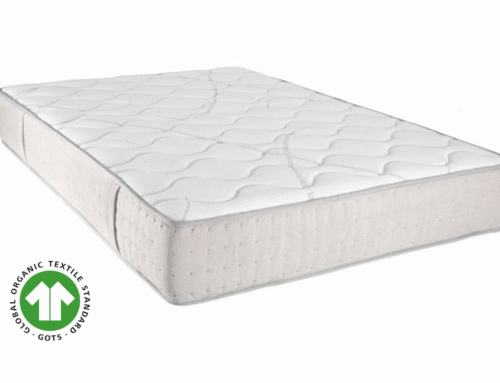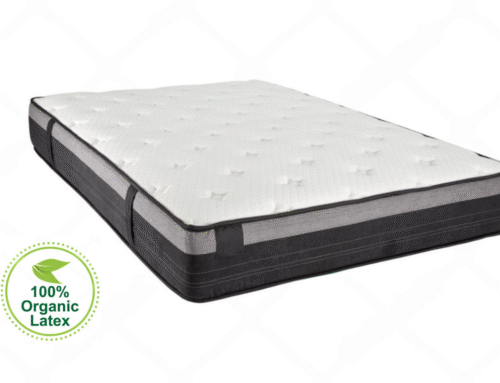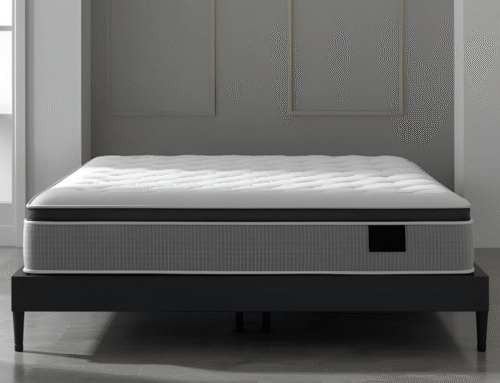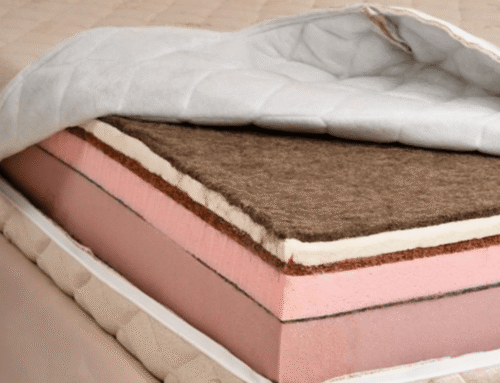Latex mattresses are known to last a long time, stay cool, and resist allergens. But they still need care to stay clean and comfortable. Sweat, spills, and dust can build up over time, which can affect how the mattress feels and how healthy it is.
Latex can be natural or synthetic. It gives a firm but bouncy feel that many people prefer over memory foam. One of the biggest reasons people choose latex is because it usually lasts longer than other types of mattresses. These mattresses are heavier than most, so it helps to think about the right thickness and weight before buying one.
Taking care of them is simple. To clean stains, use mild soap with cold water and gently dab the spot. Avoid harsh scrubbing because it can damage the material. For odors or extra freshness, sprinkle baking soda on the mattress, leave it overnight, and vacuum it off the next day. Regular cleaning keeps the mattress fresh and helps it last even longer. Simple steps like removing stains, keeping odors away, and reducing allergens can make sure your latex mattress stays supportive and comfortable for many years.
Latex mattresses are praised for their durability, breathability, and natural resistance to allergens. However, they still require regular care to stay fresh and supportive over time. Sweat, spills, and dust mites can build up, which affects comfort and hygiene if left unattended.
Key Takeaways
- Latex mattresses last longer when you clean them regularly. Simple steps like vacuuming, letting them air out, and treating stains right away help keep them in good shape.
- Baking soda works well to remove odors and moisture. Just sprinkle it on the mattress, leave it overnight, and vacuum it off the next day.
- Use mild soap and water for small stains. Don’t soak or scrub the latex too hard, or it might lose support.
- A breathable, waterproof mattress protector can stop spills and sweat from getting into the foam. It also means you won’t have to clean the mattress as often.
- Rotate your mattress every six months and vacuum it regularly. Doing this helps keep it clean, fresh, and comfortable for years.
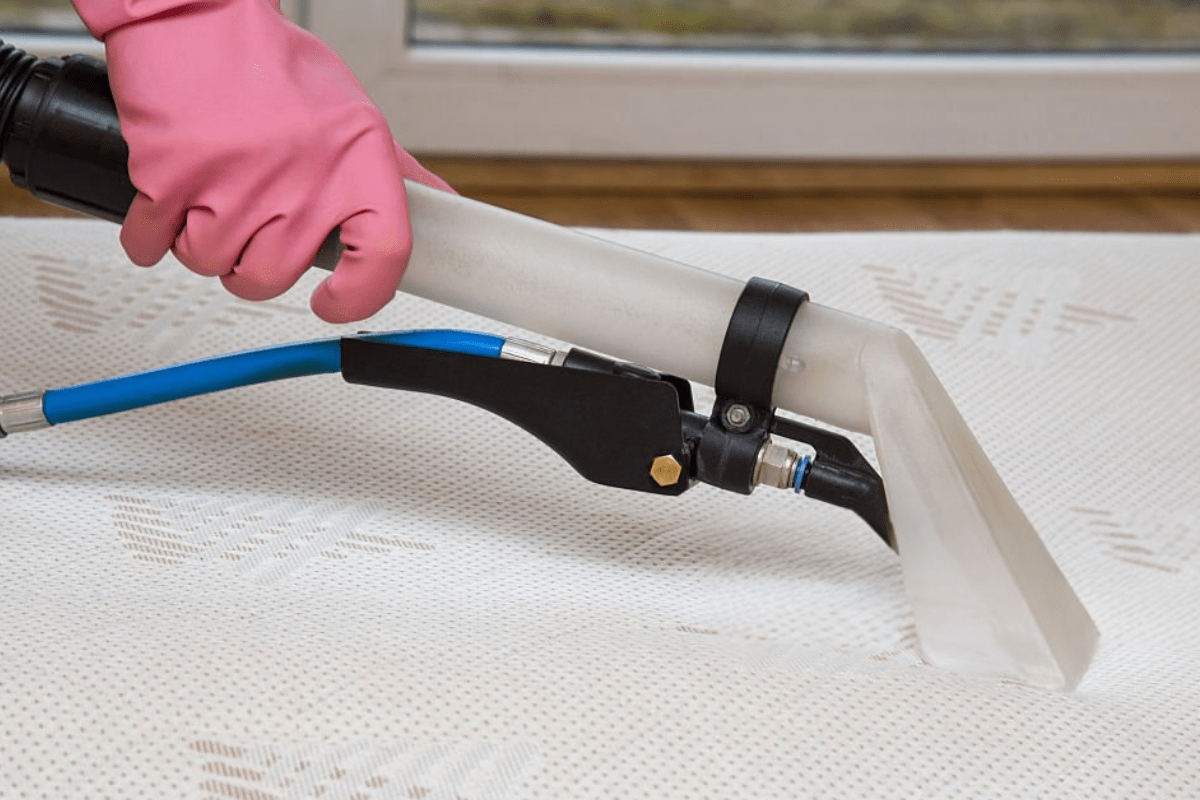
Remove Bedding and Mattress Protector
So how do you get rid of a latex mattress smell? Start by stripping the bed fully. This means removing sheets, pillowcases, and any mattress protector in place. Washing these items in hot water helps eliminate dust mites and bacteria that can build up over time. A mattress protector, though often overlooked, adds a simple layer of defense against stains and spills down the line.
After clearing the bedding, allowing the latex mattress to air out for about 30 to 60 minutes is helpful. This airing time encourages moisture trapped inside the mattress to evaporate, which keeps the sleeping surface fresh and dry. Proper ventilation also reduces the risk of mildew developing inside the mattress.
Taking these steps regularly supports mattress hygiene and extends its lifespan. Consistent care prevents buildup of allergens and protects the mattress’s materials. Fresh bedding paired with routine airing creates a cleaner, more comfortable sleep environment overall.
Vacuum the Mattress Surface
Vacuuming the mattress surface with a soft brush attachment helps remove dust, hair, and other particles that settle on it daily. Focusing on seams and edges is important since these areas tend to trap allergens more easily. This simple step can keep the mattress fresher and more comfortable overall.
Cleaning the mattress every one to three months prevents dirt and dust mites from accumulating excessively. Regular vacuuming maintains hygiene between more thorough cleanings and helps reduce potential allergy triggers. It also extends the mattress’s lifespan by minimizing buildup that can cause wear.
Using a vacuum cleaner properly avoids damage to the mattress fabric while effectively removing debris. Gentle brushing combined with suction ensures the surface stays clean without weakening the materials. This routine doesn’t require much effort but contributes a lot to maintaining a healthier sleeping environment.
Spot Clean Stains Immediately
Spot cleaning stains on a latex mattress is best with a gentle approach. Using mild dish soap mixed with lukewarm water creates suds that lift stains without harming the material. A clean white cloth dipped in just the suds should be used to gently dab the affected area, avoiding direct contact with too much water.
Excess moisture must be carefully removed by blotting with a dry towel after cleaning. Over-wetting the mattress can lead to foam damage and encourage mold growth, so avoiding soaking the mattress is crucial. This method helps preserve the mattress’s structure while tackling stains effectively.
Fresh stains respond better to quick attention, so treating them immediately improves chances of removal. Delaying stain removal can allow spills to set deeper, making cleanup harder. Prompt spot cleaning preserves both cleanliness and longevity of the mattress.
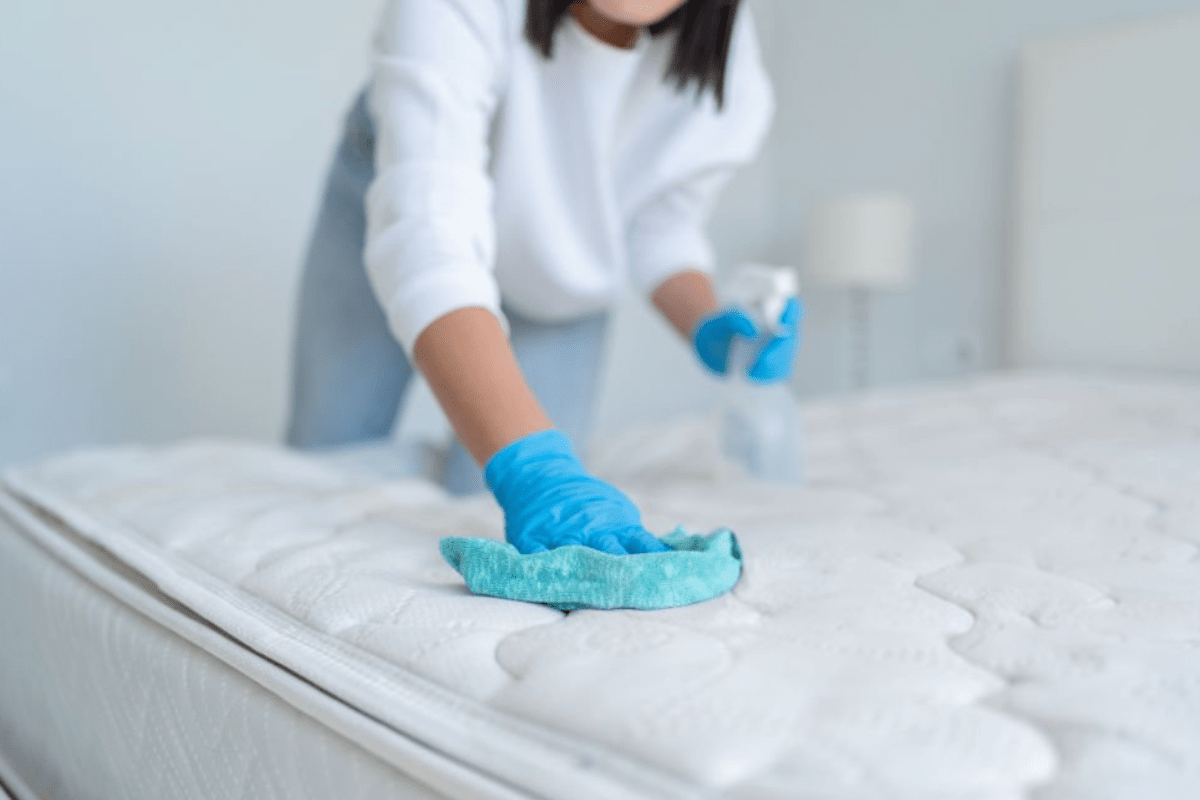
Remove Odors Naturally
Sprinkling a thin layer of baking soda on the surface and letting it rest for a few hours helps absorb odors and moisture effectively. This simple method works well to freshen up mattresses, carpets, or upholstery without harsh chemicals. Once the baking soda has had time to sit, vacuuming it thoroughly removes the trapped odors along with any moisture. For stronger smells, repeating the process or leaving the baking soda overnight provides a deeper clean.
This is a natural, low-cost way to keep living spaces smelling fresh. It avoids the risk of damage from excessive moisture or scrubbing and fits easily into regular cleaning routines.
Kill Bacteria and Allergens Safely
Latex naturally resists dust mites and mold, which helps reduce common allergens in the bedroom. Still, allergens can build up on the surface over time and need to be cleaned to maintain a fresh sleeping environment. Using a fabric-safe disinfectant spray without bleach or a diluted rubbing alcohol solution can effectively sanitize the mattress without causing damage.
A light mist of the cleaning solution should be applied evenly across the mattress surface to avoid soaking. It’s important to avoid harsh chemicals that could degrade the latex or affect its breathability. After spraying, allowing the mattress to air dry completely ensures no moisture gets trapped, which could lead to mold growth.
Regular cleaning like this supports a healthier sleep space and can help reduce allergy symptoms. Taking the time to disinfect without soaking keeps the mattress in good condition for longer. Letting the mattress dry fully before replacing bedding completes the process safely and effectively.
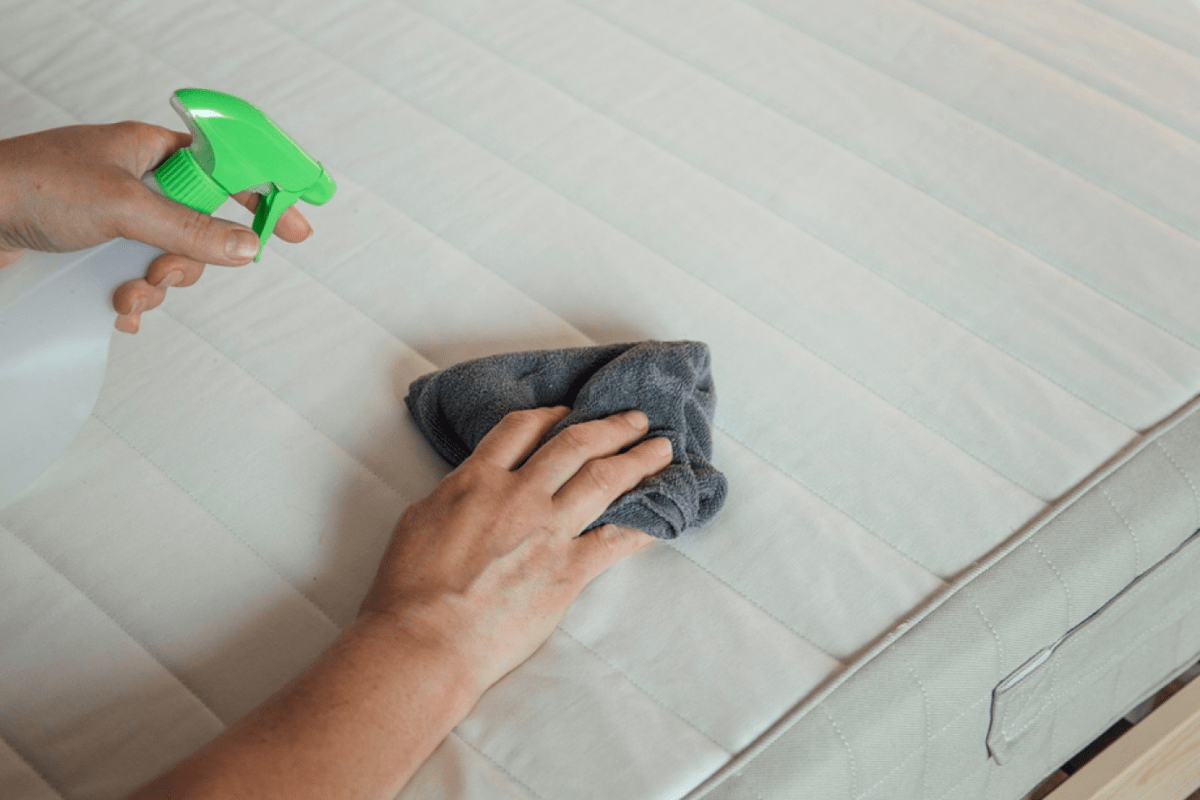
Treat Sweat and Body Oil Stains
White vinegar mixed with water offers a simple, effective way to tackle sweat and body oil stains. Spraying the solution lightly on the affected area helps break down oily residues and neutralizes any unpleasant odors. Gently blotting with a clean towel lifts the stain without spreading it further. Using a dry towel afterward is essential to soak up remaining moisture and prevent dampness from lingering. This step ensures the fabric dries faster and reduces the risk of mildew or damage. Air drying completes the process, letting the spot breathe and return to its natural state.
This method relies on common household ingredients and avoids harsh chemicals, which can harm fabrics or irritate skin. Its gentle approach works well on many materials, which makes it a handy trick for everyday stain care.
Dry the Mattress Completely
Cleaning a latex mattress is only part of the process; thoroughly drying it is just as important. Any leftover moisture can cause mold to develop and harm the mattress’s materials. Keeping the mattress in a room with good airflow or using a fan helps speed up the drying without risking damage.
Direct sunlight should be avoided when drying latex mattresses. Prolonged exposure to UV rays tends to break down the latex, which shortens its lifespan and affects comfort. A shaded, airy space is much safer for drying while protecting the mattress’s integrity. Proper drying extends the mattress’s durability and ensures a healthier sleeping environment.
These simple steps prevent common problems linked to trapped moisture and preserves the quality for longer use. The effort pays off by maintaining the mattress in good condition over time.
Mattress Protection to Reduce Cleaning Needs
A durable, waterproof mattress protector helps keep a latex mattress clean by blocking spills and stains from soaking into the foam. This barrier reduces the need for deep cleaning and keeps the mattress feeling fresh longer. Since latex foam is sensitive to moisture, protecting it this way prevents damage and extends its lifespan.
Many mattress protectors also offer breathability, which helps maintain airflow and prevent heat buildup. This balance is important because latex mattresses tend to sleep cooler but can still trap moisture without proper protection. Using a protector that lets air pass while shielding against liquids keeps the sleeping surface comfortable and hygienic.
Cleaning becomes simpler with a protector. Usually, a quick wipe or spot clean handles most messes. Without one, the latex could absorb stains that are tough to remove and might affect its support. Overall, investing in a good mattress protector saves time and effort while preserving the mattress’s condition over time.
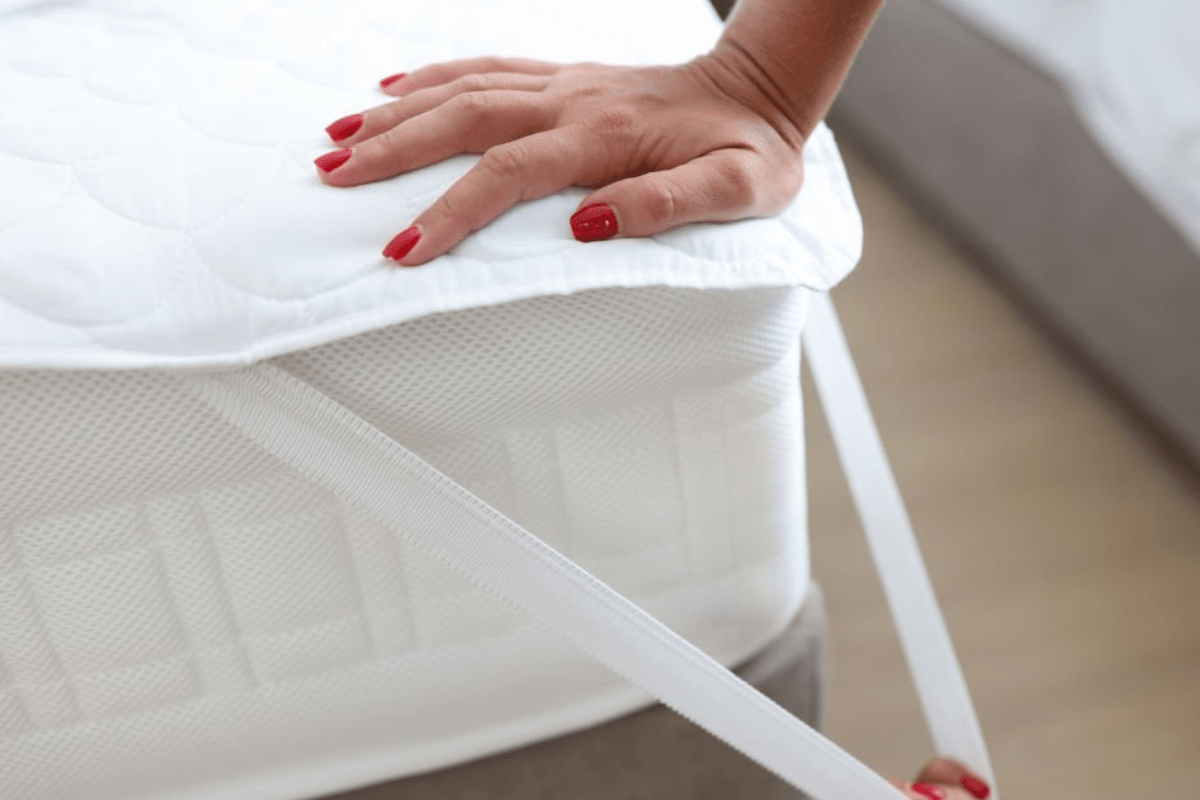
Maintain with Regular Care
Using a breathable mattress protector helps keep the mattress clean and allows air to circulate, which prevents moisture buildup. This simple step guards against stains and extends the mattress’s lifespan by protecting it from everyday wear.
Rotating the mattress every six months helps distribute weight evenly, which can prevent sagging and lumps over time. This practice supports consistent comfort and durability, especially for mattresses designed with a specific sleep surface.
Vacuuming the mattress every few months removes dust, allergens, and skin particles that accumulate with use. Regular upkeep like this lessens the need for intense cleaning sessions and promotes a healthier sleep environment overall. Learning the best ways to make a latex mattress softer and improve comfort can enhance the sleep experience while maintaining its supportive qualities.
Final Thoughts
Cleaning a latex mattress calls for a careful approach that preserves its unique material. Harsh chemicals and too much water can damage the latex, so gentle cleaning with mild soap and a damp cloth works best. Avoid scrubbing aggressively to keep the mattress in good shape for longer.
Regular maintenance, like spot cleaning spills right away and airing out the mattress, helps prevent odors and buildup. Using baking soda to absorb moisture and smells before vacuuming adds an extra layer of freshness. These simple habits protect both cleanliness and comfort.
Taking care of a latex mattress goes beyond appearance. It supports better sleep by maintaining a healthy surface. Following these easy tips keeps the mattress lasting well and ensures a pleasant sleeping environment every night, including proper storage, moving, and cutting of a latex mattress to preserve its integrity and functionality.

